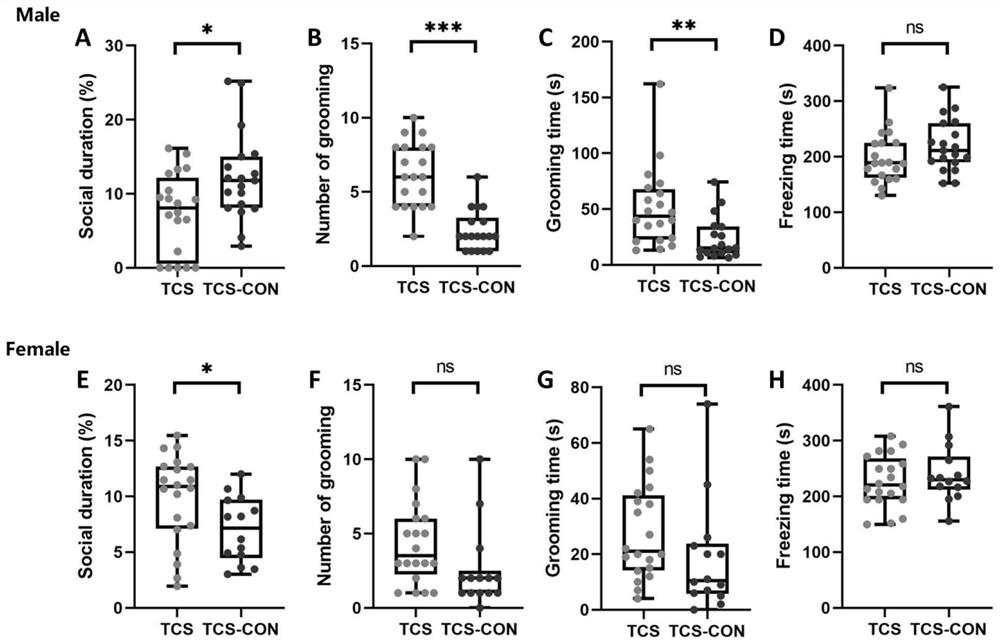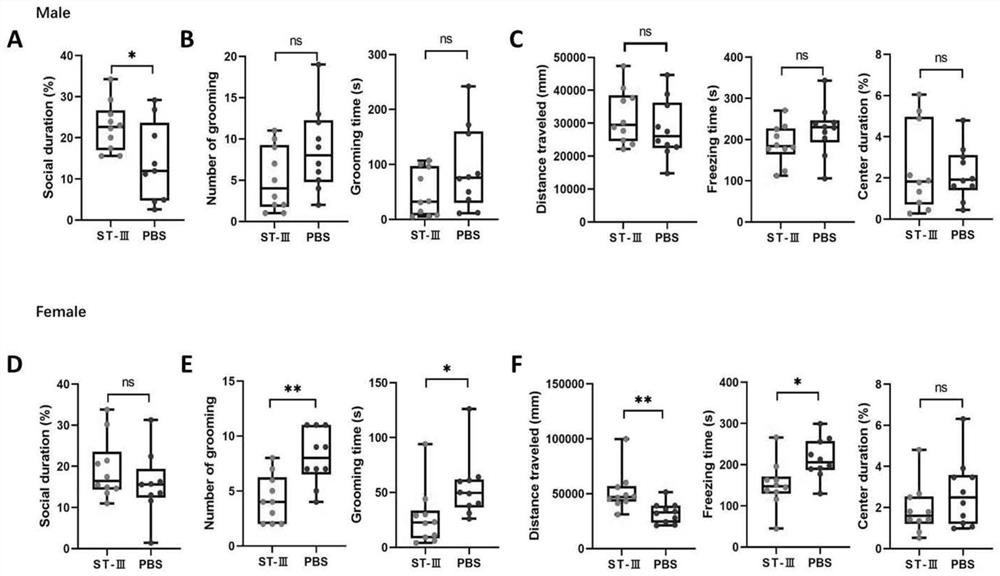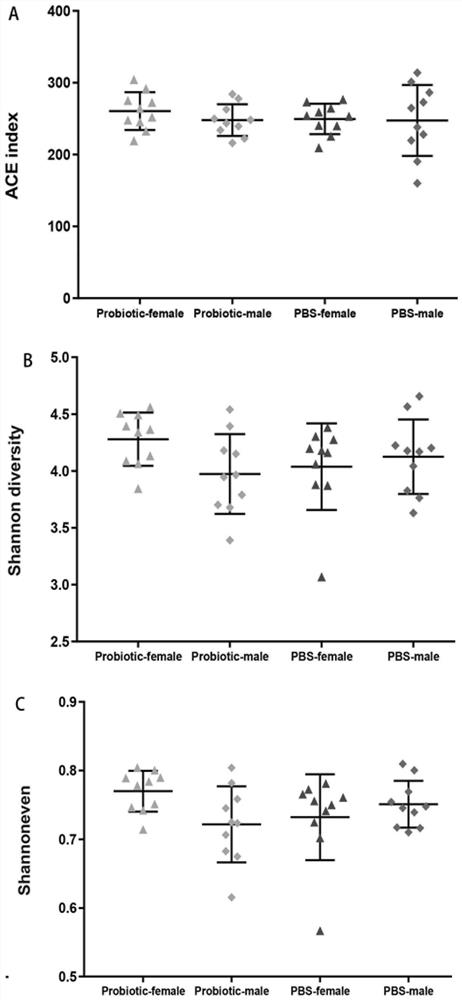Application of lactobacillus plantarum ST-III in preparation of product for treating autism
A technology of ST-III, Lactobacillus plantarum, applied in the field of microorganisms, to achieve the effect of reducing repetitive stereotypes, changing composition, and improving social barriers
- Summary
- Abstract
- Description
- Claims
- Application Information
AI Technical Summary
Problems solved by technology
Method used
Image
Examples
Embodiment 1
[0060] Preparation of Lactobacillus plantarum ST-III powder and its viable count:
[0061] Lactobacillus plantarum ST-III (CGMCC No. 0847) in MRS liquid medium ( Merck, Germany, product number: 1106610500), after culturing at 37°C for 18-24 hours, the cells were enriched, a freeze-drying protective agent was added, and the water was removed by freeze-drying to obtain Lactobacillus plantarum ST-III bacteria powder, ST-III The viable count was 3×10 11 CFU / g.
[0062] When intervening animals, the above-mentioned Lactobacillus plantarum ST-III freeze-dried bacteria powder was suspended in 10mM PBS (pH7.2-7.4), and the viable bacteria concentration was 5×10 8 CFU / mL.
Embodiment 2
[0064] Establishment of autism model mice:
[0065] Mice adaptation: Healthy SPF grade ICR mice of reproductive age were raised in a standard animal room, with a constant temperature of 23°C, relative humidity of 50%-60%, and 12h / 12h day / night alternating light. After the mice were acclimated for 1 week, the male and female mice (female: male = 2:1) were co-caged overnight at 17:00 pm, and the female mice were checked for the presence of vaginal plugs at 9:00 am the next day.
[0066]TCS modeling: TCS was dissolved in fresh corn oil, and the drug concentration was 50 mg / ml. The successfully conceived female mice were randomly divided into 2 groups. From the 7th day of pregnancy to the 21st day of weaning, they were given TCS 50.0 mg / kg or corn oil 10 mL / kg by gavage, and named as TCS group and TCS-control group. Behavioral testing of offspring mice was performed within 6 to 8 weeks after birth. After comparing with the TCS-control group, the mice with obvious autism-like be...
Embodiment 3
[0068] Behavioral tests of TCS-ASD model mice:
[0069] Open field experiment: The test mice were placed into an open field of 50 × 50 × 40 cm and allowed to explore freely for 10 min to adapt to the environment. Immediately, the camera system (1 / 3 "SONY Super HAD CCD) was turned on to record the mouse's total movement distance, central area residence time and grooming behavior in the next 10 min, and subsequent analysis was performed.
[0070] Three-box social experiment: Divide a 60 × 40 × 22 cm plexiglass box into three interconnected chambers (A, B, C). Mice were first acclimated in an empty field for 10 minutes and then confined to room B (central room). A matched stranger mouse of the same genotype, age, sex, and treatment was placed in room C, while a small object was placed in room A. During the next 10 minutes, the test mice were allowed to move freely in the three chambers, and the overhead camera (1 / 3 "SONY SuperHAD CCD) recorded the time of the test mice's olfact...
PUM
 Login to View More
Login to View More Abstract
Description
Claims
Application Information
 Login to View More
Login to View More - R&D Engineer
- R&D Manager
- IP Professional
- Industry Leading Data Capabilities
- Powerful AI technology
- Patent DNA Extraction
Browse by: Latest US Patents, China's latest patents, Technical Efficacy Thesaurus, Application Domain, Technology Topic, Popular Technical Reports.
© 2024 PatSnap. All rights reserved.Legal|Privacy policy|Modern Slavery Act Transparency Statement|Sitemap|About US| Contact US: help@patsnap.com










